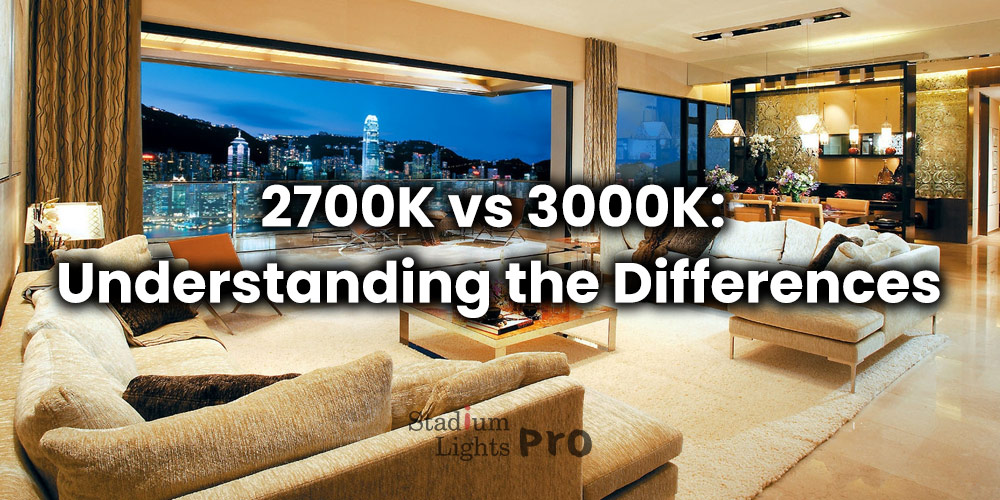Choosing the right lighting for your space is crucial to creating the perfect atmosphere and enhancing your overall well-being.
In this article, we will take a closer look at 2700K and 3000K lighting and compare their differences. Understanding the unique characteristics and benefits of each color temperature will help you make an informed decision when it comes to lighting your space.
Table of Contents
ToggleWhat is 2700K and 3000K lighting?
2700K lighting is considered “warm white” and is similar to the color of incandescent bulbs. It emits a soft, warm and inviting glow that creates a cozy and comfortable atmosphere. This type of lighting is often used in living spaces, bedrooms, and other areas where a warm and inviting ambiance is desired.
On the other hand, 3000K lighting is considered “neutral white” and is slightly cooler in color than 2700K. It gives a bright and crisp light that creates a neutral and functional atmosphere. The brightness is also known as the “color temperature” and it is measured in Kelvins (K).
What are the differences between 2700K and 3000K lighting?
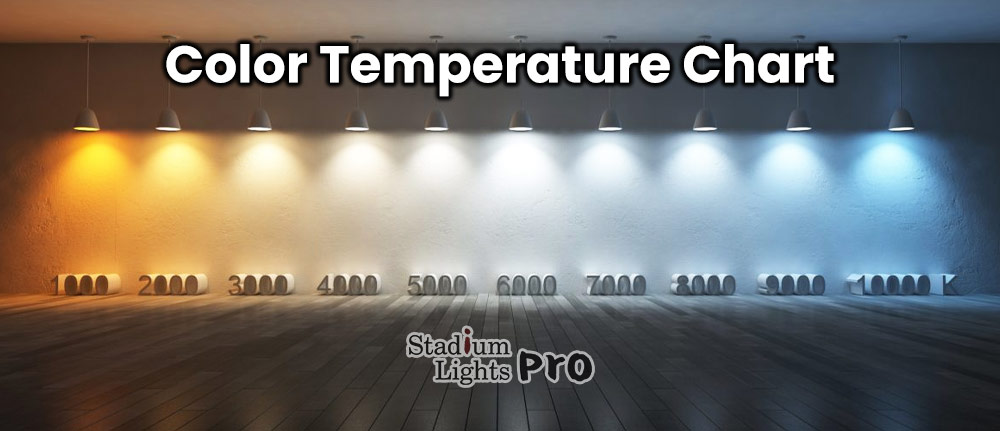
3000K lighting is considered “neutral white” and gives off a softer-white glow compared to 2700K lighting. 2700K lighting, on the other hand, has a slightly yellow-orange hue and is considered “warm white”. Both 2700K and 3000K lighting can represent a traditional incandescent bulb color and can be used in residential areas such as bathrooms, kitchens, living rooms, and bedrooms.
The choice between the two can make a significant impact on the overall atmosphere of the room. That’s why we need to carefully analyze the intended use of the space and your personal taste before selecting a light.
For example, in a living room or bedroom, 2700K lighting can create a warm and cozy atmosphere, while in a kitchen or bathroom, where task lighting is necessary, 3000K lighting may be a better choice for its bright and neutral light. Ultimately, the best lighting choice will depend on the specific needs and preferences of the individual or space.
Applications of 2700K and 3000K lighting
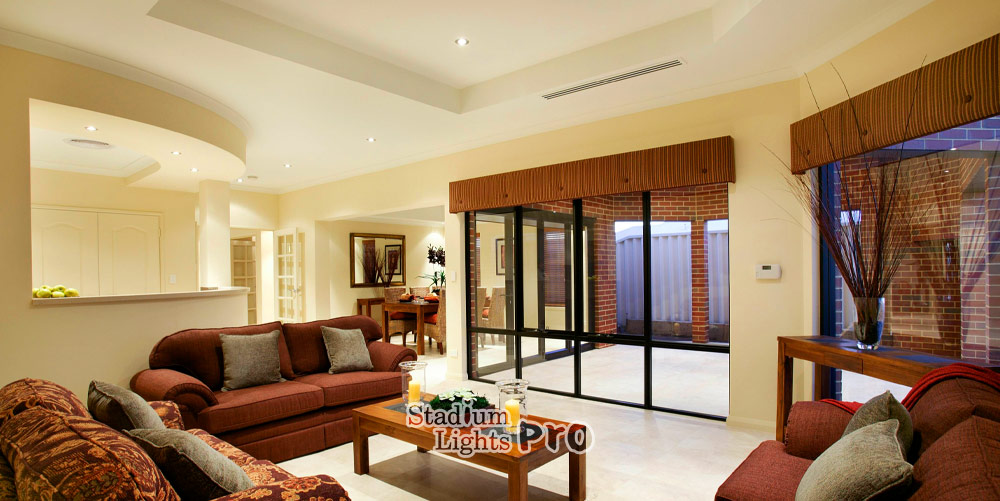
When to use 2700K lights?
2700K warm white lighting is best used in spaces where a warm and inviting atmosphere is desired. Some common examples include:
- Living rooms – for socializing, watching TV, or reading a book.
- Bedrooms – for winding down at the end of the day.
- Dining rooms – for enjoying meals with family and friends.
- Restaurants and Bars – for socializing and relaxing.
- Outdoor spaces – for entertaining or relaxing outdoors.
- Spa and relaxation area – for relaxing and rejuvenating.
When to use 3000K lights?
3000K lights are best used in spaces where a bright and neutral light is desired.
- Kitchens – 3000K lights provide a bright and neutral light that is ideal for cooking, preparing food and cleaning.
- Bathrooms – for applying makeup, shaving, and other grooming tasks.
- Offices – for reading, writing, and working on the computer.
- Workshops – for tasks that require visibility and clarity.
- Retail Spaces – for showcasing merchandise.
- Museums and galleries – for displaying art and other artifacts.
2700K vs 3000K – which is better for bedroom?
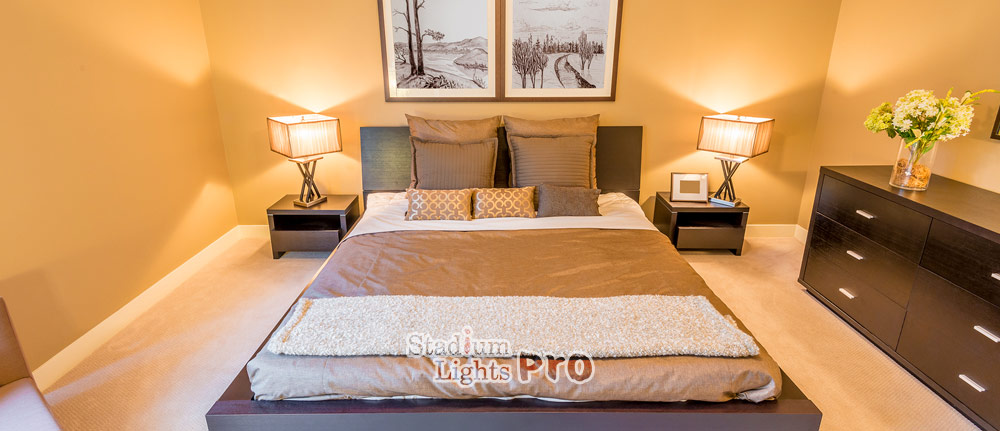
When selecting lighting for a bedroom, it is essential to consider both the color temperature and blue light emission. The color temperature of a light bulb refers to how warm or cool the light appears, measured in Kelvins (K). Warm white (2700K) lights provide a cozy, amber-like glow, while soft white (3000K) lights offer a more subdued, natural look.
In addition to color temperature, we may consider the amount of blue light emitted by the lights. Blue light is known to suppress the production of melatonin, a hormone that regulates sleep. As a result, exposure to blue light at night can make it harder to fall asleep and stay asleep. Both 2700K and 3000K lights emit less blue light than higher color temperature options like 4000K and 5500K. However, 2700K lights emit even less blue light than 3000K lights.
When deciding on bedroom lighting, it is crucial to keep in mind the specific needs and preferences of the space. For example, if you plan to use a reading light close to where you sleep, it may be more beneficial to opt for a warmer 2700K option to promote better sleep. Moreover, consider the use of dimmers and smart light bulbs, which allow you to easily adjust the brightness and color temperature of the lights, making it easy to create a relaxing atmosphere and improve the overall sleep experience.
2700K vs 3000K – which is better for kitchen?
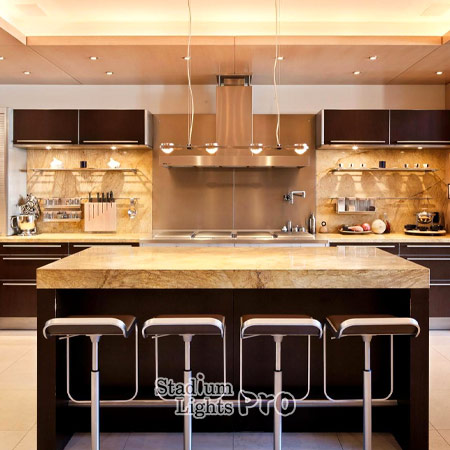 Integrating lights of different color temperatures in a kitchen can create a cohesive and balanced look. Ambient lighting can be achieved with warm white (2700K) LED lights, while task lighting for areas such as under cabinets and countertops can be provided by neutral white (3000K) lights.
Integrating lights of different color temperatures in a kitchen can create a cohesive and balanced look. Ambient lighting can be achieved with warm white (2700K) LED lights, while task lighting for areas such as under cabinets and countertops can be provided by neutral white (3000K) lights.
Yet, we may consider the size of the kitchen when choosing between these two options. In smaller kitchens, the neutral light of 3000K may be preferred for its functionality and inviting atmosphere. In larger kitchens, the warm ambiance created by 2700K lights may be more suitable to keep the mood relaxed. Ultimately, the best lighting choice will depend on the specific needs and preferences of the space.
2700K vs 3000K – which is better for living room?
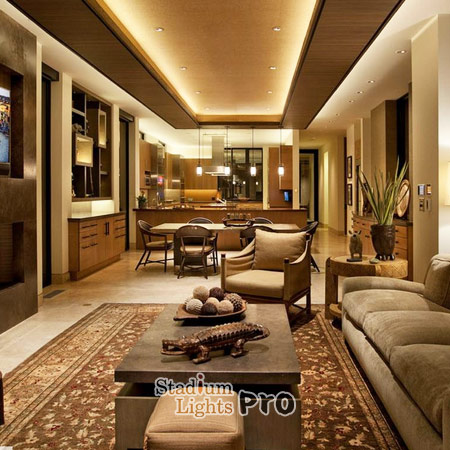 The living room is a multifunctional space where one can play with various lighting options to create a cohesive and balanced ambiance. A combination of warm white (2700K) and soft white (3000K) lights can be used to create a dynamic and visually interesting space. The warm white lights (2700K) can be utilized to create a relaxed and comfortable atmosphere, while the soft white lights (3000K) can be used as overhead lights or reading lights, providing a more functional and task-oriented lighting.
The living room is a multifunctional space where one can play with various lighting options to create a cohesive and balanced ambiance. A combination of warm white (2700K) and soft white (3000K) lights can be used to create a dynamic and visually interesting space. The warm white lights (2700K) can be utilized to create a relaxed and comfortable atmosphere, while the soft white lights (3000K) can be used as overhead lights or reading lights, providing a more functional and task-oriented lighting.
It’s necessary to take into account the amount of natural light the living room receives. Rooms that receive a lot of natural light during the day will benefit from the use of warm white lights (2700K) as they are more effective in balancing the natural light and creating a warm and inviting atmosphere. On the other hand, rooms that receive less natural light will benefit from the use of soft white lights (3000K) as they provide a brighter and more functional lighting for the space.
Besides, warm white lights are perfect for creating an inviting atmosphere and enhance the experience of enjoying family time or entertaining friends. The soft white lights or cooler white tones, on the other hand, are more suited for task-oriented activities like reading, working, or watching TV. The cooler tones of these lights also help to keep you more alert and aware of your surroundings, making it easier to focus on the task at hand.
Moreover, consider the use of dimmers and smart light bulbs, it allows you to easily adjust the brightness and color temperature of the lights, making it easy to create a comfortable and functional living room.
2700K vs 3000K – which is better for bathroom?
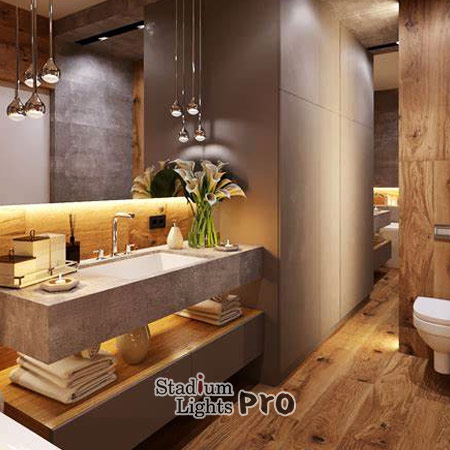 When it comes to bathroom lighting, the choice of color temperature can greatly impact the overall aesthetic and functionality of the space. The 3000K light source is commonly preferred in bathrooms as it provides a truer and crisper tone, making it easier to see yourself in the mirror and apply makeup or groom yourself. This type of light is also ideal for tasks such as shaving or tweezing because it provides a more accurate representation of color, which can be essential for maintaining personal hygiene and grooming.
When it comes to bathroom lighting, the choice of color temperature can greatly impact the overall aesthetic and functionality of the space. The 3000K light source is commonly preferred in bathrooms as it provides a truer and crisper tone, making it easier to see yourself in the mirror and apply makeup or groom yourself. This type of light is also ideal for tasks such as shaving or tweezing because it provides a more accurate representation of color, which can be essential for maintaining personal hygiene and grooming.
On the other hand, the 2700K light produces an orange and yellow hue that can be more comfortable and natural for relaxing in a living room setting, but it is not as suitable for bathroom lighting. The warm and inviting atmosphere created by the 2700K lights can make it more difficult to see yourself clearly in the mirror. The warm light can also cast a yellow-ish tint on your skin which can make it more difficult to assess your appearance.
2700K vs 3000K – which is better for basement?
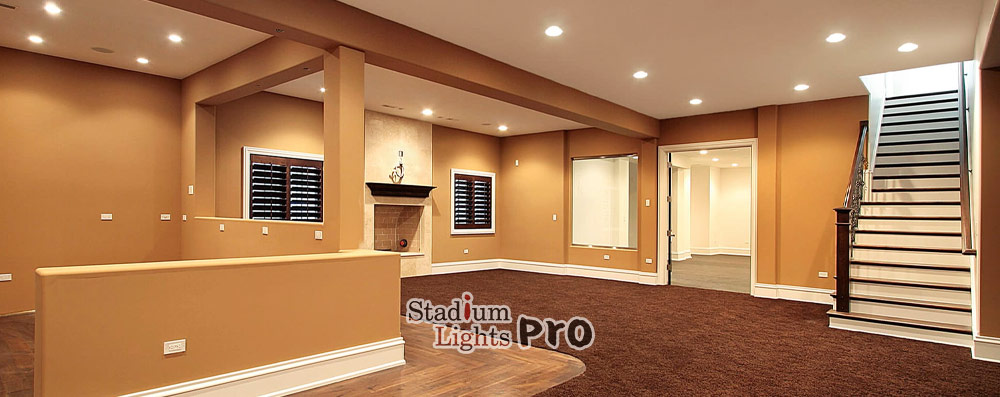
2700K and 3000K lights both have their own unique characteristics that make them suitable for different settings. 2700K lights produce a warm and cozy light, similar to the color of an incandescent bulb. This makes them a great option for creating a relaxing and inviting atmosphere in a basement.
They can also help to make a space feel more cozy and comfortable. On the other hand, 3000K lights produce a bright and natural light that is similar to the color of daylight.
This makes them a great option for a basement that will be used as a work or play space as it help to create more energetic ambiance and increase visibility. Both options have their own advantages and it depends on what you want to achieve with the lighting in your basement.
2700K vs 3000K – which is better for backyard and outdoor space?
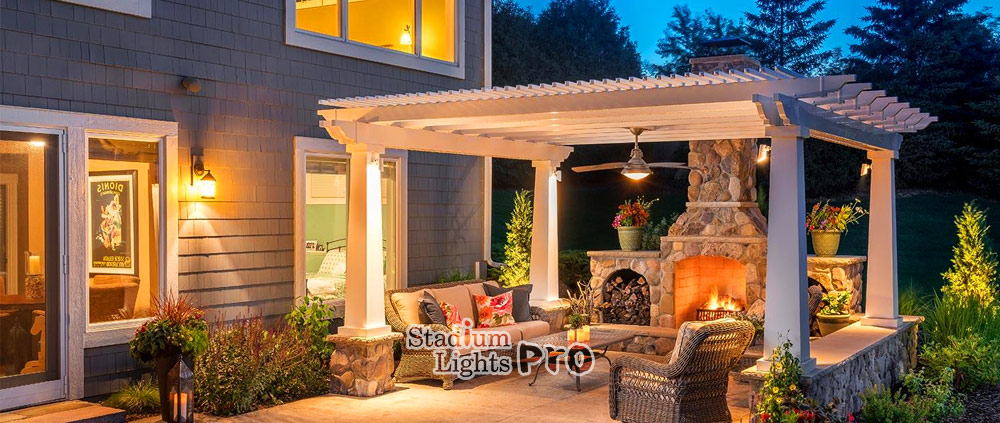
When choosing outdoor lighting, we can consider the atmosphere of the space and how the lighting will affect the overall visual appearance. For outdoor areas that feature a lot of concrete surfaces and artificial elements, such as patios, a warmer 2700K light may be a better option. This type of light, also known as “warm white” light, creates a cozy and inviting atmosphere, and it is less harsh on the eyes compared to cooler light.
On the other hand, if your outdoor space has a strong natural presence with many trees, lawn, and other natural elements, a 3000K light can help bring out the natural colors of these elements. The cooler light, also known as “cool white” light, enhances the natural colors and makes them more vivid and true-to-life. This type of light is also ideal for showcasing architectural features and creating a sleek and modern ambiance.
The appropriate color temperature for outdoor lighting depends on the atmosphere of the space. A warmer 2700K light is ideal for spaces with a lot of concrete and artificial elements, while a cooler 3000K light is ideal for spaces with a strong natural presence.
What is the relationship between color rendering index and color temperature?
The color rendering index (CRI) is a measure of how well a light source reproduces colors compared to a reference light source, such as natural sunlight. A higher CRI means that colors will appear more vibrant and true-to-life under the light source. It is measured on a scale of 0 to 100, where 100 is the highest possible CRI.
Color temperature, on the other hand, is a measure of the color appearance of a light source, determined by the temperature of the light-emitting object. It is typically measured in Kelvins (K) and ranges from warm (2700K) to cool (6500K) and describes the color of the light.
CRI and color temperature are independent of each other, but they do affect the overall color appearance of an object. A higher CRI is generally desirable, but a lower color temperature may be preferred in certain settings, such as a warm, cozy living room.
2700K vs 3000K lighting frequently asked questions
What is the difference in color temperature between 2700K and 3000K lighting?
2700K lighting has a warm, yellow-orange hue, while 3000K lighting has a slightly cooler, white-orange hue.
Which is better for residential use?
2700K is often considered the best choice for residential use because it creates a warm and inviting atmosphere.
Which is better for commercial use?
The choice between 2700K and 3000K lighting for commercial use will depend on the specific application and the desired atmosphere. For example, 3000K lighting may be better for task lighting or in areas where a cooler color temperature is desired.
Which is better for reading or studying?
Generally, it is recommended to use a cooler color temperature of around 4000K or higher for reading or studying because it can help to reduce eye strain.
Which is more energy efficient?
Both 2700K and 3000K lighting can be energy efficient, depending on the specific products and technologies used. It’s recommended to consider the energy efficiency of a specific product when making a decision.
How does the color temperature affect color rendering?
The color temperature of a light source affects how well it can render colors. Generally, lower color temperatures (like 2700K) are better at rendering warm colors like reds and yellows, while higher color temperatures (like 5000K or higher) are better at rendering cool colors like blues and greens.
Can 2700K and 3000K lighting be used together in the same space?
Yes, 2700K and 3000K lighting can be used together in the same space. This can be useful for creating different zones or moods within a room, or for highlighting certain areas or features. We may consider the overall design and aesthetic of the space when using different color temperatures together.
Can 2700K and 3000K lighting be dimmed?
Yes, both 2700K and 3000K lighting can be dimmed, assuming they are dimmable lights. It’s essential to check the compatibility of the light with the dimmer switch before making a purchase.
Can I use 2700K or 3000K for growing plants?
Both 2700K and 3000K lighting can be used for growing plants, but the choice will depend on the specific plants and their requirements. Generally, plants require a full spectrum of light including red and blue spectrum, 2700K is not suitable for plants that needs full spectrum.
Are 2700K and 3000K lighting compatible with smart home systems?
Yes, both 2700K and 3000K lighting can be compatible with smart home systems, depending on the specific products and technologies used. Many smart bulbs and smart lighting systems can be controlled through voice commands or through a smartphone app, regardless of their color temperature.
Does one have a longer lifespan than the other?
The lifespan of a light bulb is determined by several factors, including the quality of the product, the technology used, and the number of hours it is used. The color temperature of the bulb does not affect its lifespan.
What type of bulb should I use for 2700K or 3000K lighting?
There are many different types of bulbs that can be used for 2700K or 3000K lighting, including incandescent, LED, and CFL. The best choice will depend on the specific application and desired atmosphere. LED lighting is considered to be more energy-efficient and have a longer lifespan than incandescent bulbs.
Conclusion
2700K and 3000K lighting are both popular choices for indoor and outdoor lighting. 2700K lighting has a warm, yellow-orange hue and is often considered the best choice for residential use because it creates a warm and inviting atmosphere. 3000K lighting has a slightly cooler, white-orange hue and may be better for task lighting or in areas where a cooler color temperature is desired.
The choice between 2700K and 3000K lighting will depend on the specific application and desired atmosphere. Both can be used together to create different zones or moods within a room.
If you have any questions or concerns about choosing the right color temperature for your lighting needs, please don’t hesitate to reach out to us. Our team would be more than happy to provide you with free advice on whether 2700K or 3000K lights would be the best fit for your specific application.
Whether you’re looking to create a warm and inviting atmosphere or a brighter and more energizing environment, we can help you find the right solution. Besides, if you have any other questions or if there’s anything else we can assist you with, please don’t hesitate to contact us. We’re here to help you make the most informed decision for your lighting needs.

